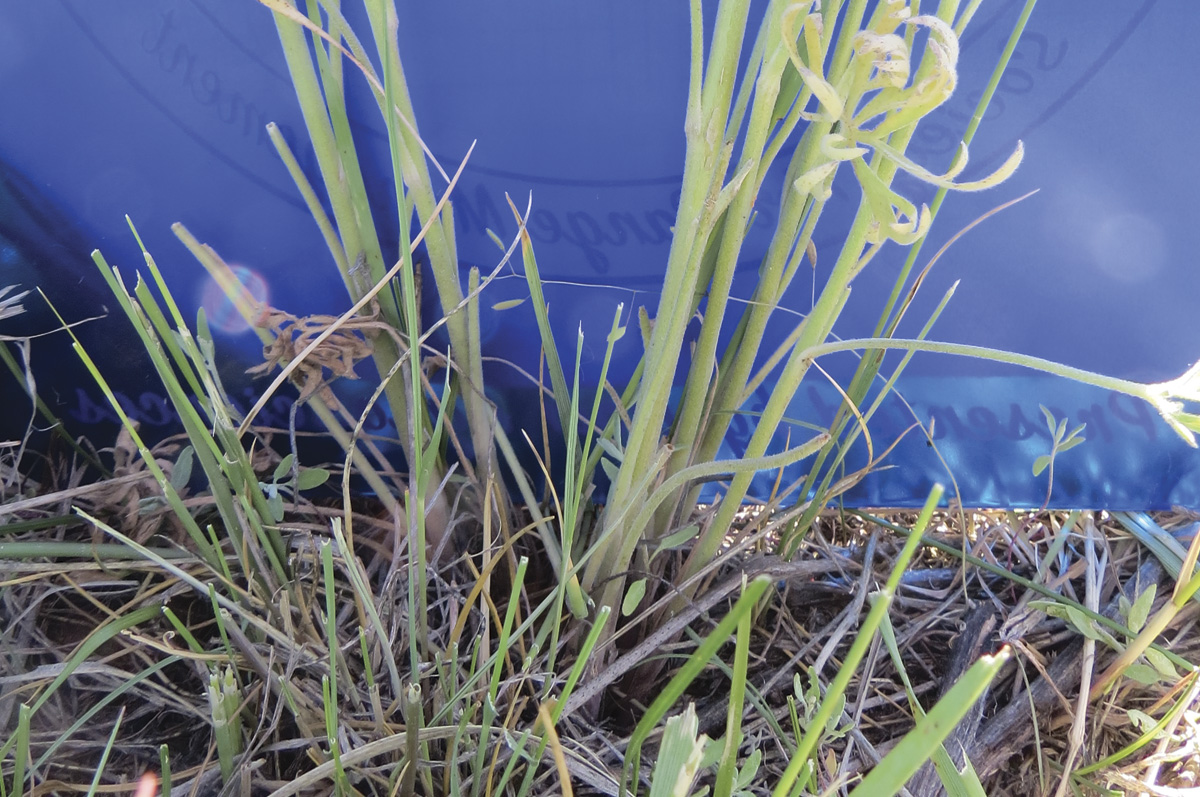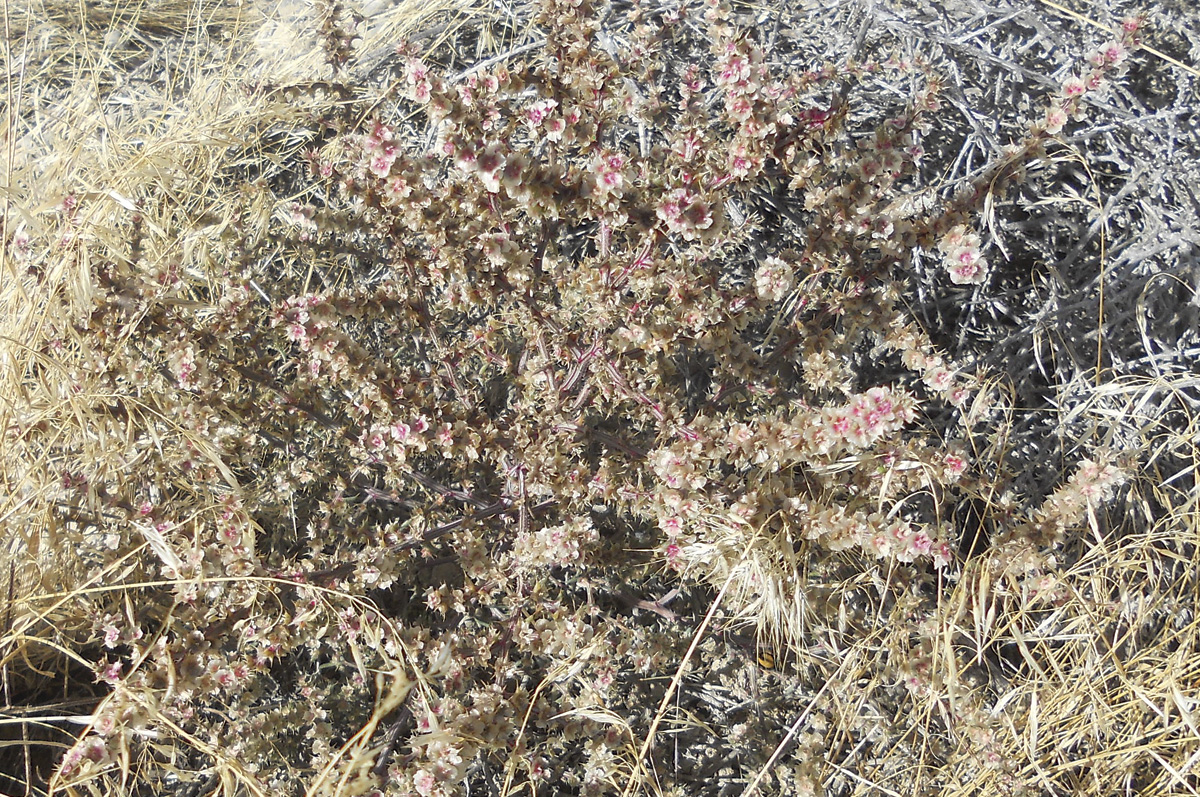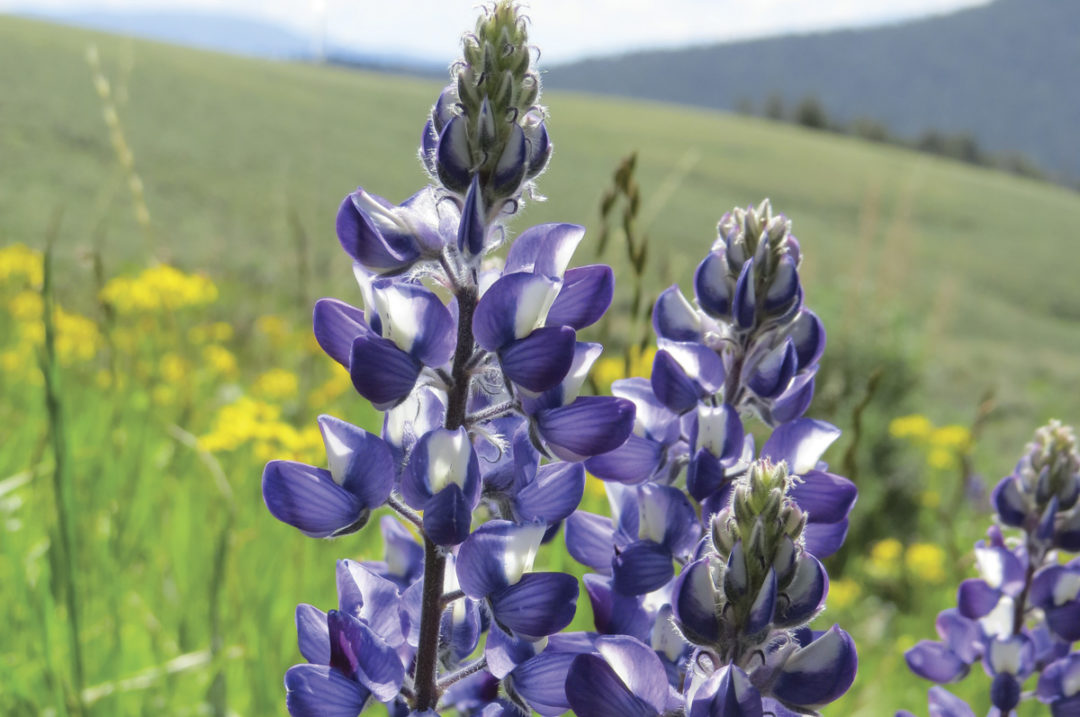No range management textbook is complete without a cautionary photo of bloated livestock that got into a patch of something or other that they oughtn’t to have. Native rangelands host a range of picturesque killers from larkspur to lupine to locoweed. Meanwhile, introduced weeds, forages and ornamentals carry their own cocktails of deadly poisons, whether they be salt-loving halogeton, nitrate-accumulating kochia or endophyte-bearing forage fescues. Let the stockgrower beware!
This, of course, is where the Agricultural Research Service (ARS) Poisonous Plants Research Laboratory (PPRL) in Logan, Utah, comes in. The USDA has been doing research on poisonous plants since 1895, but ARS formally established the PPRL in 1955. Its mission includes identifying harmful plants, parsing out specific toxins and their mechanisms, establishing protocols for diagnosis and educating producers on management and treatment. “We’re the only lab in the world that just studies poisonous plants,” says Dr. Bryan Stegelmeier, who has been with the PPRL since 1990.
Although cases of plant poisoning today tend to be smaller – less catastrophic – than historically, they do still occur. And when they do, says Stegelmeier, “they can be devastating for a particular operation.”
Solving a mystery
Even after a century of research on poisonous plants in the U.S., there are still mysteries out there. As recently as seven or eight years ago, Stegelmeier says, an operation in Colorado had animals sickening within hours of eating weedy alfalfa hay purchased to get through a tough winter. Producers removed the hay the first day but still lost 165 animals. Necropsies showed advanced liver disease, but analyses for corresponding toxins were negative. Researchers at the PPRL tried to replicate intoxication, but cattle refused to eat the hay. They finally sifted through the fine materials left in the feeder for seeds, which they planted in the greenhouse and identified as lance-leaf sage. From it they isolated the alkaloid salvarine and showed its toxicity to cattle, goats and mice.
"It took every bit of three years for us to do all this work,” says Stegelmeier. It was the first report of a fatal poisoning by lance-leaf sage in North America.
 Identifying the culprit of a plant poisoning case is made difficult by the fact that it’s only a problem once it’s been eaten, like this plains larkspur. Photo by Julia McCarthy.
Identifying the culprit of a plant poisoning case is made difficult by the fact that it’s only a problem once it’s been eaten, like this plains larkspur. Photo by Julia McCarthy.
Identifying plant poisoning
Even when the culprit is a known poisonous plant and information is available about its toxins and growth habits, making a definitive plant-poisoning diagnosis can still be difficult. For one thing, plant intoxication often shares symptoms with other illnesses.
One example common to Idaho is calf abortion. “An abortion storm can be caused by other things,” says Stegelmeier – campylobacter and brucellosis, to name just two. So even when symptoms line up, producers cannot assume that plants were to blame without investigating further and, often, enlisting professional help.
Then, too, there are a host of options for plants that might do an animal harm. “You can’t just say, ‘I would like to look for plant toxins,’” he says. “You need to have some direction because it would be almost impossible to test for all the toxins at once – and it would be very expensive.”
In the case of calf abortions, pine needles are a well-known culprit but may not even be the most likely suspect. “If you come into an abortion storm, that’s where you ought to start thinking first, ‘nitrates,’” says Stegelmeier. These may come from a number of weeds and crops harvested or grazed under the right conditions. (If nitrates are suspected in a case of sudden death or abortion, Stegelmeier suggests submitting the eyeball for testing, as nitrates there break down relatively slowly.)
Because potential causes abound, the first step in a suspected plant poisoning situation is recording information about the scenario. The type of animal and its stage of life is important, as well as things the animal had access to and may have eaten. The number of animals affected and their clinical signs are also clues. “We need to look at the whole case,” Stegelmeier says.
 Invasive tumbleweeds like Russian thistle (shown) and kochia can accumulate nitrates and cause sudden death or abortion in livestock. Photo by Julia McCarthy.
Invasive tumbleweeds like Russian thistle (shown) and kochia can accumulate nitrates and cause sudden death or abortion in livestock. Photo by Julia McCarthy.
Reaction and prevention
Identifying postmortem lesions via necropsy in a poisoned animal is one step Stegelmeier advises pursuing. “It might cost some money,” he says, “but it might be the best money you’ve spent in your life if you can come to an answer quickly.” In the lance-leaf sage case, the work done helped researchers identify an entirely new poisonous plant. But on a smaller scale, it might be important in informing a producer about a dangerous batch of hay or a pasture that must be strategically grazed.
Producers have tools to help avoid poisoning if they know they have a problem. A classic example in larkspur is to adjust grazing timing to avoid the “toxic window” when plants are both palatable and high in toxic alkaloids.
“A lot of poisonous plants are pretty good forage,” Stegelmeier says. “The trouble is when they eat too much, too quickly and they get a toxic dose.”
No wonder hay can be tied to so many poisonings. When eating hay contaminated with toxic plants, animals may be less selective. This is especially true when feed is limited and there is competition from herdmates. As desiccated plant identification is difficult, “it’s important to know where hay is coming from and what potentially problematic plants are in those areas,” Stegelmeier says.
If feeding new or suspect hay, Stegelmeier recommends forage testing and gradual introduction. If animals are responding negatively, remove the hay immediately. By the same principle, animals should be removed from pastures where illness is occurring – but carefully.
“If they’re recumbent and up on their brisket, give them time,” Stegelmeier says. Jumping in and quickly moving mildly intoxicated animals (or even giving an antidote) might cause mildly intoxicated animals stress that pushes them past the point of recovery. “Sometimes the cure is worse than the disease,” he says.
Another important component of prevention is to keep pastures healthy. “Usually when they have alternative choices they do OK,” says Stegelmeier. “If there are enough good plants there usually won’t be a problem.” Animals learn quickly which plants to avoid and do so. During drought years, animals in poor condition or overgrazed pastures lend themselves to problems. “A good rainstorm is often better than any program you’ve got,” he says.
That is probably one reason that massive poisoning events are less common than they used to be. “If you look at our ranges, it’s beautiful out there now compared to 100 years ago,” he says. And we’ve learned a lot in the last 100 years, too. But, says Stegelmeier, “We’re still learning.”



.jpg?height=auto&t=1713304395&width=285)


